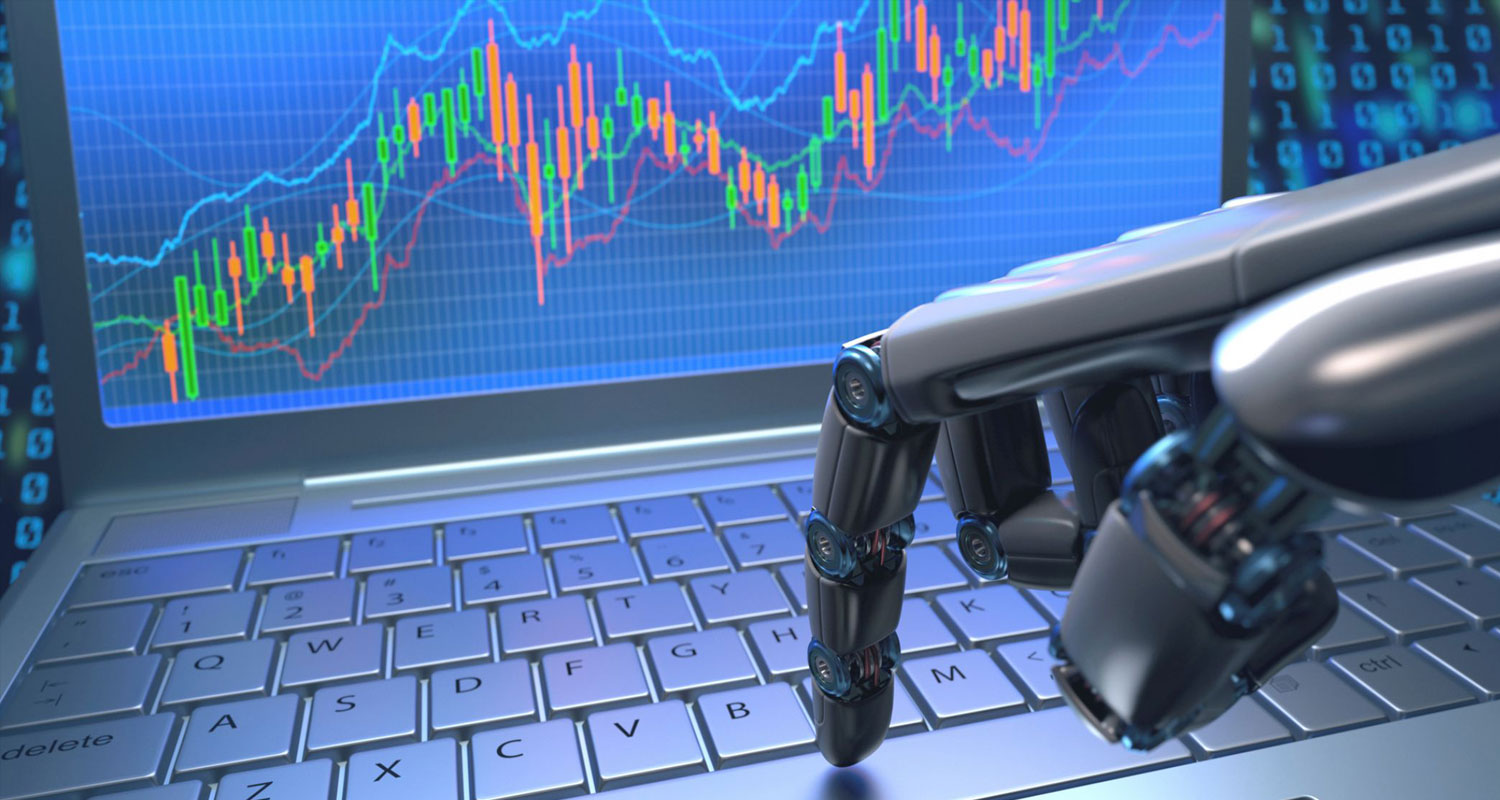 Unless you’ve shielded yourself from all news sources for the past five years, you have heard of automated trading. There are numerous variations of the practice, but most focus on a set of algorithms that give investors the power to set all their buying and selling activity to autopilot. The automated trading robot can precisely and almost flawlessly carry out your particular trading rules, make purchases, hold positions, set stops, and get out of a trade based on a simple or highly complex set of instructions. Of all securities transactions on major exchanges in the US, UK and Japan, for example, about 80% are initiated by automated trading systems.
Unless you’ve shielded yourself from all news sources for the past five years, you have heard of automated trading. There are numerous variations of the practice, but most focus on a set of algorithms that give investors the power to set all their buying and selling activity to autopilot. The automated trading robot can precisely and almost flawlessly carry out your particular trading rules, make purchases, hold positions, set stops, and get out of a trade based on a simple or highly complex set of instructions. Of all securities transactions on major exchanges in the US, UK and Japan, for example, about 80% are initiated by automated trading systems.
Keep in mind that most of that activity is institution and government-based, but individuals are becoming more involved in auto-trading. Most reputable brokers now offer automated trading as a standard part of their online services for all account holders.
But how can you determine whether this style of buying and selling is right for you?
First, it’s essential to know exactly what automated trading is. Then, individuals must assess and weigh the multiple pros and cons of the method. After that, take time to understand how to build a DIY auto-trading system. Finally, don’t forget to understand basic market dynamics that play a central role in automated trading and review the most common myths.
What is it?
Automated trading uses a set of algorithms, based on human-created rules, to do all the standard actions that are usually performed by customers of an online brokerage firm. If you’ve ever wondered what is automated trading then you are already curious about the potential benefits that this new technique holds. Keep in mind that there are many variations on the theme, with some brokers and merchants offering systems that range from simple to quite complex.
Advantages
There are numerous advantages for people who prefer to automate at least a portion of their trading activity. One is convenience. There’s no need to constantly watch the screen, monitor trades, set stops and follow everyday price action. The program does all that for you. Likewise, one of the major benefits of any kind of automation is that emotion, for the most part, is removed from the day-to-day decision-making process. It’s a well-known fact that many inexperienced investors get in major trouble when they let their emotional state overrule logic and discipline.
DIY systems
If you like the idea of tinkering around with technical code and assembling your own automated trading-like programs, the process is not all that complicated. There are some brokerage firms that offer tutorials for beginners who want to learn to construct their own lines of commands and build, from the ground up, a fully automated program that includes numerous commands and special instructions. It’s good to remember that market dynamics can sometimes affect the performance of any automated trading program. When major trends shift, the instructions within the program’s code might not recognise the situation for what it is. That’s just one reason to do periodic checks and make sure the entire automated trading system is operating as you desire.
Disadvantages
Nothing is perfect. When people assume that an auto-trade setup will make decisions for them, they get into major trouble. One of the primary disadvantages of automated programs is that they often break down and need to be adjusted. Likewise, even when they perform exactly as you want them to, they’re not good at adapting to changing trends and market conditions. Even the best algorithmic system is nothing more than a sophisticated machine. Machines occasionally malfunction, break down and fail to take special circumstances into account. A good example is self-driving cars. One of the main problems engineers encounter is unexpected on-road conditions and glitches in original programs. The same problems can arise with automated trading, which is why it’s critical to check on them regularly.
Myths
Like every new form of technology, automated securities programs are the victim of several widespread myths. Here are a couple, along with the explanation in each case.
- Auto-traders can get rich fast: Automated trading offers many advantages to those who use it correctly, including a hands-off way of taking part in the securities markets. But no technique yet known can deliver on a promise like fast wealth.
- Auto-trade technology will eventually replace human placed trades: It’s doubtful that any computerised approach will ever take the place of human decision-making. Automated trading can and does perform dozens of routine tasks, but they only operate according to human instructions. Even some of the most sophisticated institutional versions still require human programmers to create and maintain them on a regular basis.
This promoted content was paid for by the party concerned

